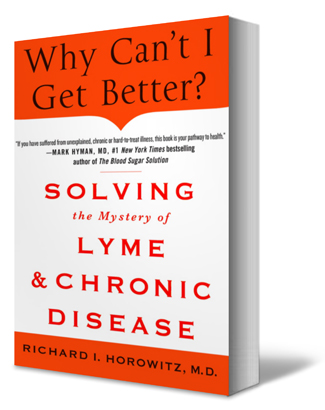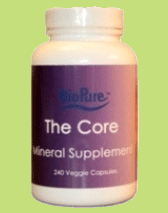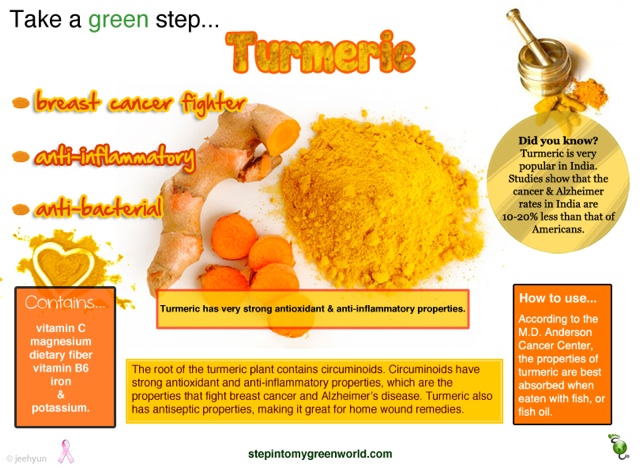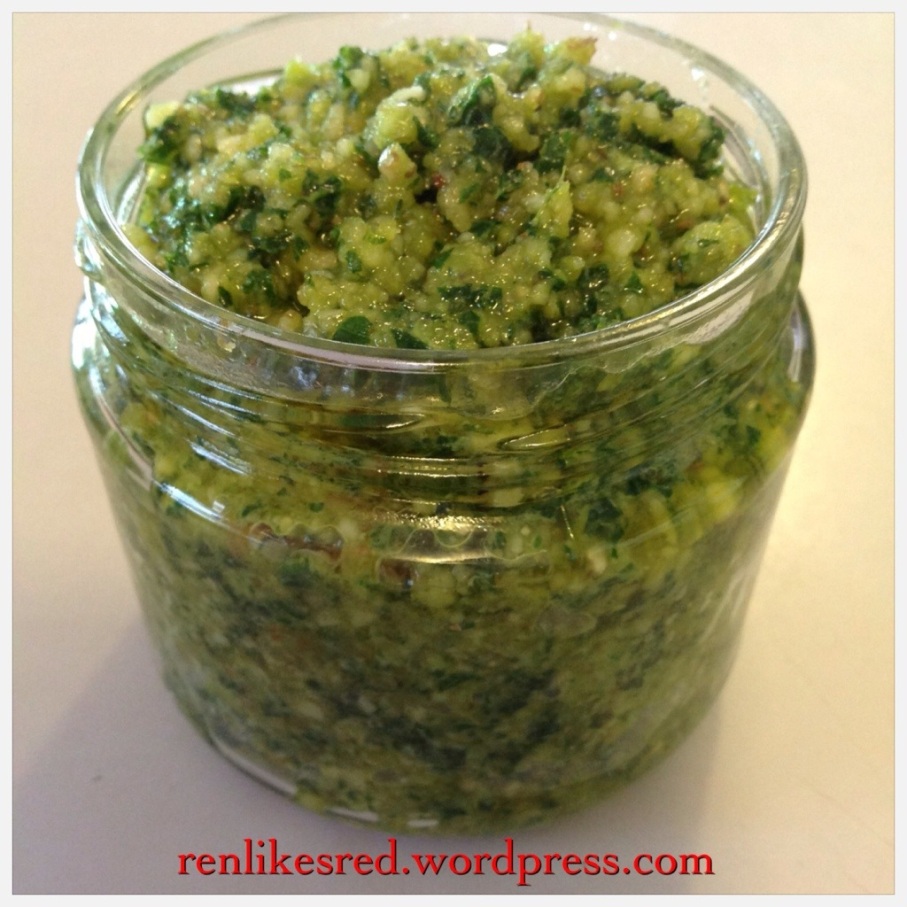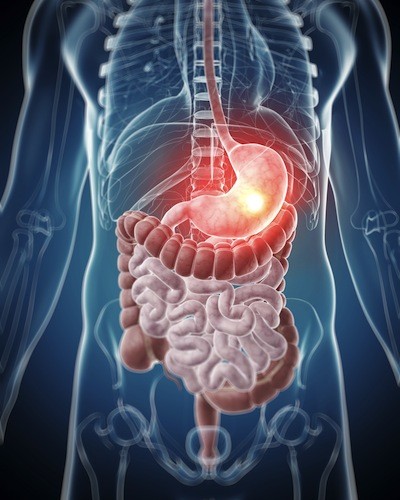
Latest research on chronic stealth infections. If you've been diagnosed with CFS/FM, ME, Dementia, Parkinson's, Lyme, Hashimoto's, you need to read this blog for eye opening, non - mainstream information
Tuesday 31 December 2013
Thursday 26 December 2013
Tick bite anaphylaxis: incidence and man... [Emerg Med Australas. 2013] - PubMed - NCBI
Tick bite anaphylaxis: incidence and man... [Emerg Med Australas. 2013] - PubMed - NCBI
the incidence of tick bite in a small hospital in NSW
the incidence of tick bite in a small hospital in NSW
Wednesday 18 December 2013
Monday 16 December 2013
Liposome With Sunflower Lecithin - YouTube
Liposome With Sunflower Lecithin - YouTube
If you're making your own liposomal C, do use oils not water to emulsify
If you're making your own liposomal C, do use oils not water to emulsify
Sunday 15 December 2013
Vitamin D status and ill health: a systematic review : The Lancet Diabetes & Endocrinology
http://www.thelancet.com/journals/landia/article/PIIS2213-8587%2813%2970165-7/abstract
Low serum concentrations of 25-hydroxyvitamin D (25[OH]D) have been associated with many non-skeletal disorders. However, whether low 25(OH)D is the cause or result of ill health is not known. We did a systematic search of prospective and intervention studies that assessed the effect of 25(OH)D concentrations on non-skeletal health outcomes in individuals aged 18 years or older
Low serum concentrations of 25-hydroxyvitamin D (25[OH]D) have been associated with many non-skeletal disorders. However, whether low 25(OH)D is the cause or result of ill health is not known. We did a systematic search of prospective and intervention studies that assessed the effect of 25(OH)D concentrations on non-skeletal health outcomes in individuals aged 18 years or older
Infection and Autoimmunity - Volume 12, Number 3—March 2006 - Emerging Infectious Disease journal - CDC
Infection and Autoimmunity - Volume 12, Number 3—March 2006 - Emerging Infectious Disease journal - CDC
The editors boldly state that reading the chapters in this book brings one to the conclusion that all autoimmune diseases are infectious, until proven otherwise (my paraphrase). Add environmental triggers to the mix, and most investigators would agree.
The editors boldly state that reading the chapters in this book brings one to the conclusion that all autoimmune diseases are infectious, until proven otherwise (my paraphrase). Add environmental triggers to the mix, and most investigators would agree.
Isolation of Clostridium perfringens Type B in an I... [PLoS One. 2013] - PubMed - NCBI
Isolation of Clostridium perfringens Type B in an I... [PLoS One. 2013] - PubMed
Researchers have identified a bacterial toxin that they believe may be a trigger for multiple sclerosis (MS).
Thursday 12 December 2013
Monday 9 December 2013
You absolutely cannot be healthy any more – it’s official | Dr. Malcolm Kendrick
You absolutely cannot be healthy any more – it’s official | Dr. Malcolm Kendrick
This guy writes really well on health issues
I have been waiting for some time now before it became officially impossible to be healthy. In recent years the boundaries of health have been inexorably squeezed tighter and tighter. Recently, they snapped shut. The land of the healthy now no longer exists. Tis but a memory.
I wondered if it would be cholesterol that would obliterate health first, but it turned out to be blood pressure. This was pretty much second favourite in my book.
As with many areas of ‘health’ the definition of a healthy blood pressure has fallen and fallen. A few years ago we had go to the stage of a condition known as pre-hypertension. A state of having a high blood pressure that wasn’t really high, but represented an ill-defined danger of some sort. This pressure was set at 115/75mmHg. Far lower than the average blood pressure in the Western World.
This guy writes really well on health issues
I have been waiting for some time now before it became officially impossible to be healthy. In recent years the boundaries of health have been inexorably squeezed tighter and tighter. Recently, they snapped shut. The land of the healthy now no longer exists. Tis but a memory.
I wondered if it would be cholesterol that would obliterate health first, but it turned out to be blood pressure. This was pretty much second favourite in my book.
As with many areas of ‘health’ the definition of a healthy blood pressure has fallen and fallen. A few years ago we had go to the stage of a condition known as pre-hypertension. A state of having a high blood pressure that wasn’t really high, but represented an ill-defined danger of some sort. This pressure was set at 115/75mmHg. Far lower than the average blood pressure in the Western World.
Friday 6 December 2013
Wednesday 4 December 2013
AM - Report: Australians overpay for prescription drugs 02/12/2013
AM - Report: Australians overpay for prescription drugs 02/12/2013
Price gouging just like every other product in Australia!!
Price gouging just like every other product in Australia!!
Tuesday 3 December 2013
The Food Matters Free Screening 2013 | FOODMATTERS®
The Food Matters Free Screening 2013 | FOODMATTERS®
Watch this great video FREE online for the next 7 days

Watch this great video FREE online for the next 7 days

Sunday 1 December 2013
BMC Medicine | Full text | Venous endothelial injury in central nervous system diseases
BMC Medicine | Full text | Venous endothelial injury in central nervous system diseases
The role of the venous system in the pathogenesis of inflammatory neurological/neurodegenerative diseases remains largely unknown and underinvestigated.
The role of the venous system in the pathogenesis of inflammatory neurological/neurodegenerative diseases remains largely unknown and underinvestigated.
Genomic Test Accurately Sorts Viral vs. Bacterial Infections | Duke Global Health Institute
Genomic Test Accurately Sorts Viral vs. Bacterial Infections | Duke Global Health Institute
A blood test developed by researchers at Duke Medicine showed more than 90-percent accuracy in distinguishing between viral and bacterial infections when tested in people with respiratory illnesses.

A blood test developed by researchers at Duke Medicine showed more than 90-percent accuracy in distinguishing between viral and bacterial infections when tested in people with respiratory illnesses.

Saturday 30 November 2013
Everyday Hero
Everyday Hero
Making a difference, something each and everyone can do!! Just one dollar can make a difference

Making a difference, something each and everyone can do!! Just one dollar can make a difference

Friday 29 November 2013
Thursday 28 November 2013
Thursday 21 November 2013
Low-dose naltrexone for the treatment of fibromyalgia -
http://www.ncbi.nlm.nih.gov/pubmed/23359310
CONCLUSION:
The preliminary evidence continues to show that low-dose naltrexone has a specific and clinically beneficial impact on fibromyalgia pain. The medication is widely available, inexpensive, safe, and well-tolerated. Parallel-group randomized controlled trials are needed to fully determine the efficacy of the medication.Sunday 17 November 2013
Friday 15 November 2013
Modern Pathology - Localization of Propionibacterium acnes in granulomas supports a possible etiologic link between sarcoidosis and the bacterium
Modern Pathology - Localization of Propionibacterium acnes in granulomas supports a possible etiologic link between sarcoidosis and the bacterium
Many studies have suggested a bacterial cause for sarcoidosis.
In this study published in Modern Pathology (May 2012), Japanese scientists tested the hypothesis that P. acnes is an etiologic agent of sarcoidosis. They found greater than 50% reactivity: 57% in lung tissue and 88% in lymph node. They also found bodies that might be intact forms of intracellular bacteria, because they lacked a cell wall structure.
The P. acnes trigger-factor protein induced pulmonary granulomas only in mice with latent P. acnes infection in their lungs. Eradication of P. acnes by antibiotics in these mice prevented granulomas, which might explain the recently reported effectiveness of tetracyclines for treating sarcoidosis.
Localization of Propionibacterium acnes in granulomas supports a possible etiologic link between sarcoidosis and the bacterium
Many studies have suggested a bacterial cause for sarcoidosis.
In this study published in Modern Pathology (May 2012), Japanese scientists tested the hypothesis that P. acnes is an etiologic agent of sarcoidosis. They found greater than 50% reactivity: 57% in lung tissue and 88% in lymph node. They also found bodies that might be intact forms of intracellular bacteria, because they lacked a cell wall structure.
The P. acnes trigger-factor protein induced pulmonary granulomas only in mice with latent P. acnes infection in their lungs. Eradication of P. acnes by antibiotics in these mice prevented granulomas, which might explain the recently reported effectiveness of tetracyclines for treating sarcoidosis.
Localization of Propionibacterium acnes in granulomas supports a possible etiologic link between sarcoidosis and the bacterium
Wednesday 13 November 2013
Evidence for Mycoplasma ssp., Chlamydia pneun... [J Neurosci Res. 2007] - PubMed - NCBI
Evidence for Mycoplasma ssp., Chlamydia pneun... [J Neurosci Res. 2007] - PubMed - NCBI
Evidence for Mycoplasma ssp., Chlamydia pneunomiae, and human herpes virus-6 coinfections in the blood of patients with autistic spectrum disorders.
Source
The Institute for Molecular Medicine, Huntington Beach, California 92647, USA. gnicolson@immed.orgAbstract
We examined the blood of 48 patients from central and southern California diagnosed with autistic spectrum disorders (ASD) by using forensic polymerase chain reaction and found that a large subset (28/48 or 58.3%) of patients showed evidence of Mycoplasma spp. infections compared with two of 45 (4.7%) age-matched control subjects (odds ratio = 13.8, P < 0.001). Because ASD patients have a high prevalence of one or more Mycoplasma spp. and sometimes show evidence of infections with Chlamydia pneumoniae, we examined ASD patients for other infections. Also, the presence of one or more systemic infections may predispose ASD patients to other infections, so we examined the prevalence of C. pneumoniae (4/48 or 8.3% positive, odds ratio = 5.6, P < 0.01) and human herpes virus-6 (HHV-6, 14/48 or 29.2%, odds ratio = 4.5, P < 0.01) coinfections in ASD patients. We found that Mycoplasma-positive and -negative ASD patients had similar percentages of C. pneumoniae and HHV-6 infections, suggesting that such infections occur independently in ASD patients. Control subjects also had low rates of C. pneumoniae (1/48 or 2.1%) and HHV-6 (4/48 or 8.3%) infections, and there were no coinfections in control subjects. The results indicate that a large subset of ASD patients shows evidence of bacterial and/or viral infections (odds ratio = 16.5, P < 0.001). The significance of these infections in ASD is discussed in terms of appropriate treatment.
(c) 2007 Wiley-Liss, Inc.
(c) 2007 Wiley-Liss, Inc.
http://www.noosafarmersmarket.com.au/
Kehoes Kitchen will be at Noosa Farmers Markets this weekend.
If you want delicious GAPS and Paleo friendly food that's organic and lovingly handmade,
find Kehoes stall

If you want delicious GAPS and Paleo friendly food that's organic and lovingly handmade,
find Kehoes stall

Tuesday 12 November 2013
Tuesday 5 November 2013
Wednesday 23 October 2013
Monday 21 October 2013
Human Babesiosis in Europe: what clinicians need to know - Online First - Springer
Human Babesiosis in Europe: what clinicians need to know - Online First - Springer
Hopefully your doctor will be interested in purchasing this article only $40
Hopefully your doctor will be interested in purchasing this article only $40
Lyme disease Australian Patient Survey 2013 - IMPORTANT SURVEY
Lyme disease Australian Patient Survey 2013
Lyme disease Australian Patient Survey 2013
The survey is designed to explore how you came to be infected with Lyme disease, how you were diagnosed and how you are being treated. The survey will take approximately 15 - 20 minutes to complete.
If you are completing this survey on behalf of a minor, please answer the questions to the best of your knowledge.
Answers you provide will be used to analyse the status of Lyme disease in Australia from a patient perspective. A summary of the results will be available on www.lymedisease.org.au.
Personal information you provide as part of this survey will remain confidential.
If you are completing this survey on behalf of a minor, please answer the questions to the best of your knowledge.
Answers you provide will be used to analyse the status of Lyme disease in Australia from a patient perspective. A summary of the results will be available on www.lymedisease.org.au.
Personal information you provide as part of this survey will remain confidential.
Thursday 17 October 2013
▶ From Acrodynia to Autism: Mercury Across Generations, More Evidence of Harm - YouTube
▶ From Acrodynia to Autism: Mercury Across Generations, More Evidence of Harm - YouTube
"Acrodynia, more commonly called Pink Disease, ravaged children in Europe, North America and Australia in the first half of the 20th Century ... common symptoms included social withdrawal, lack of eye contact; loss of language; repetitive and self-injurious behaviors; body-rocking; toe-walking; sensitivity to light, noise and touch; low muscle tone; immune disorders and respiratory problems.
"Acrodynia, more commonly called Pink Disease, ravaged children in Europe, North America and Australia in the first half of the 20th Century ... common symptoms included social withdrawal, lack of eye contact; loss of language; repetitive and self-injurious behaviors; body-rocking; toe-walking; sensitivity to light, noise and touch; low muscle tone; immune disorders and respiratory problems.
After decades of scientific dead-ends, the primary cause of this mysterious illness was found to be exposure to widely promoted and purportedly “safe” medicines given to infants and young children when their teeth started growing in.
The drugs contained inorganic mercury. Scientists later found that 1 in every 500 children exposed to the mercury powders developed the disease as the result of an unusually strong sensitivity to mercury, likely due to their genetics. Once mercury was removed from the drugs, no new cases appeared, although those exposed still live a lifetime of suffering."
http://www.safeminds.org/blog/2013/10/17/safeminds-releases-new-video-scientific-links-mercury-poisoning-autism/
ABC Catalyst Heart of the Matter Promo - YouTube
ABC Catalyst Heart of the Matter Promo - YouTube
Do yourself a favour and watch Part 1 exposing the myths surrounding cholesterol. October 24
Do yourself a favour and watch Part 1 exposing the myths surrounding cholesterol. October 24
When is Vitamin D supplementation appropriate??
When is vitamin D supplementation appropriate?
Despite vitamin D supplementation chronic diseases have increased. More foods than ever before are fortified with vitamin D; the Nutrition Business Journal reported sales of vitamin D supplements have skyrocketed to $425 million in 2009 from just $40 million in 2001.1 Vitamin D supplement proponents promised double digit declines in chronic disease yet, between 2000 and 2010, the percentage of adults aged 45-64 (and 65+) with two or more (of nine selected) chronic conditions, increased for both men and women, all racial and ethnic groups examined, and most income groups.2 As reported by the Partnership to Fight Chronic Disease, more than one in four Americans lives with multiple chronic conditions, including one in 15 children.3 Almost $2 out of $3 spent on health care in the U.S. is directed toward care for the 27% of Americans with multiple chronic conditions and chronic illness is expected to continue increasing.4,5
According to our most respected medical experts, "Outcomes related to autoimmune disorders, cancer, cardiovascular disease and hypertension, diabetes and metabolic syndrome, falls and physical performance, immune functioning, infections, neuropsychological functioning, and preeclampsia could not be linked reliably with calcium or vitamin D intake and were often conflicting." 6 The majority of the findings concerning vitamin D, calcium, or a combination of both nutrients on the different health outcomes were inconsistent.7 Genetic findings in those predisposed to longevity cast doubt on whether low levels of vitamin D cause age-related diseases and mortality.8 A study by Tufts Medical Center's Division of Rheumatology concluded, "Vitamin D supplementation for two years at a dose sufficient to elevate 25(OH)D plasma levels to higher than 36ng/ml, when compared with placebo, did not reduce knee pain or cartilage volume loss in patients with symptomatic knee osteoarthritis." 9 Subjects supplemented with high doses of vitamin D to increase 25(OH)D levels from 20.9ng/ml to 40.1ng/mg, saw "...no improvement in serum lipids, HbA1c, or HS-CRP with high dose vitamin D supplementation. If anything, the effect was negative." 10 A study published online August 2013 in the journal JAMA Internal Medicine concluded that Vitamin D supplementation did not improve blood pressure or markers of vascular health in older patients with isolated systolic hypertension.11A study published this month in The Lancet found little evidence supporting the use of vitamin D supplements by seniors hoping to improve bone density and ward off potential fractures. They concluded that "Continuing widespread use of vitamin D for osteoporosis prevention in community-dwelling adults without specific risk factors for vitamin D deficiency seems to be inappropriate." 12
Vitamin D deficiency or insufficiency can occur in certain situations. Genetic defects in the VDR may result in vitamin D deficiency; a number of mutations have been identified that lead to hereditary vitamin D resistance.13 Disorders that limit vitamin D absorption and conditions that impair conversion of vitamin D into active metabolites (e.g., certain liver, kidney & hereditary disorders) may cause deficiency.14 Sick or elderly people who rarely go outdoors and have poor diets are also at risk. Age is a factor, in that synthesis of vitamin D declines with increasing age, due in part to a fall in 7-dehydrocholesterol levels and due in part to alterations in skin morphology.15 Vitamin D supplementation may be appropriate in these special conditions, but the evidence indicates it's not appropriate to supplement the general population.
Vitamin D deficiency or insufficiency can occur in certain situations. Genetic defects in the VDR may result in vitamin D deficiency; a number of mutations have been identified that lead to hereditary vitamin D resistance.13 Disorders that limit vitamin D absorption and conditions that impair conversion of vitamin D into active metabolites (e.g., certain liver, kidney & hereditary disorders) may cause deficiency.14 Sick or elderly people who rarely go outdoors and have poor diets are also at risk. Age is a factor, in that synthesis of vitamin D declines with increasing age, due in part to a fall in 7-dehydrocholesterol levels and due in part to alterations in skin morphology.15 Vitamin D supplementation may be appropriate in these special conditions, but the evidence indicates it's not appropriate to supplement the general population.
- Yamshchikov AV, Desai NS, Blumberg HM, Ziegler TR, Tangpricha V. Vitamin D for treatment and prevention of infectious diseases: a systematic review of randomized controlled trials. Endocr Pract. Jul-Aug 2009;15(5):438-49.
- The vitamin D dilemma. ConsumerReports.org. May 2011.
- Fried VM, Bernstein AB, Bush MA. Multiple Chronic Conditions Among Adults Aged 45 and Over: Trends Over the Past 10 Years. Centers for Disease Control and Prevention. Jul 2012.
- Shelby J. Needs Great, Evidence Lacking for People with Multiple Chronic Conditions. Scribd. Apr 2013. Accessed May 7, 2013.
- Anderson G. Chronic Care: Making the Case for Ongoing Care. Robert Wood Johnson Foundation. Jan 1, 2010.
- Ross AC, Taylor CL, Yaktine AL, Del Valle HB. Dietary Reference Intakes for Calcium and Vitamin D. Washington, D.C.: National Academy of Sciences; 2010. 0-309-16394-3.
- Mattke S, Klautzer L, Mengistu T, Hu J, Wu H. Health and Well-Being in the Home: A Global Analysis of Needs, Expectations, and Priorities for Home Health care Technology. Rand Corporation. 2010.
- Ross AC, Manson JE, Abrams SA, et al. The 2011 Report on Dietary Reference Intakes for Calcium and Vitamin D from the Institute of Medicine: What Clinicians Need to Know. J Clin Endocrinol Metab. Jan 2011;96(1):53-58.
- Noordam R, de Craen AJ, Pedram P, et al. Levels of 25-hydroxyvitamin D in familial longevity: the Leiden Longevity Study. CMAJ. Dec 2012;184(18):E963-8.
- McAlindon T, LaValley M, Schneider E, et al. Effect of vitamin D supplementation on progression of knee pain and cartilage volume loss in patients with symptomatic osteoarthritis: a randomized controlled trial. JAMA. Jan 2013;309(2):155-62.
- Witham MD, Price RJG, Struthers AD, et al. Cholecalciferol Treatment to Reduce Blood Pressure in Older Patients With Isolated Systolic Hypertension:The VitDISH Randomized Controlled Trial. JAMA Intern Med. Aug 2013.
- Reid IR, Bolland MJ, Grey A. Effects of vitamin D supplements on bone mineral density: a systematic review and meta-analysis. The Lancet, Early Online Publication. Oct 2013.
- Jorde R, Strand Hutchinson M, Kjærgaard M, Sneve M, Grimnes G. Supplementation with High Doses of Vitamin D to Subjects without Vitamin D Deficiency May Have Negative Effects: Pooled Data from Four Intervention Trials in Tromsø. ISRN Endocrinol. 2013;2013:348705.
- Koren R. Vitamin D receptor defects: the story of hereditary resistance to vitamin D. Pediatr Endocrinol Rev. Aug 2006;3 Suppl 3:470-5.
- MacLaughlin J, Holick MF. Aging decreases the capacity of human skin to produce vitamin D3. J Clin Invest. Oct 1985;76(4):1536-8.
From L
When is vitamin D supplementation appropriate?
Despite vitamin D supplementation chronic diseases have increased. More foods than ever before are fortified with vitamin D; the Nutrition Business Journal reported sales of vitamin D supplements have skyrocketed to $425 million in 2009 from just $40 million in 2001.1 Vitamin D supplement proponents promised double digit declines in chronic disease yet, between 2000 and 2010, the percentage of adults aged 45-64 (and 65+) with two or more (of nine selected) chronic conditions, increased for both men and women, all racial and ethnic groups examined, and most income groups.2 As reported by the Partnership to Fight Chronic Disease, more than one in four Americans lives with multiple chronic conditions, including one in 15 children.3 Almost $2 out of $3 spent on health care in the U.S. is directed toward care for the 27% of Americans with multiple chronic conditions and chronic illness is expected to continue increasing.4,5
According to our most respected medical experts, "Outcomes related to autoimmune disorders, cancer, cardiovascular disease and hypertension, diabetes and metabolic syndrome, falls and physical performance, immune functioning, infections, neuropsychological functioning, and preeclampsia could not be linked reliably with calcium or vitamin D intake and were often conflicting." 6 The majority of the findings concerning vitamin D, calcium, or a combination of both nutrients on the different health outcomes were inconsistent.7 Genetic findings in those predisposed to longevity cast doubt on whether low levels of vitamin D cause age-related diseases and mortality.8 A study by Tufts Medical Center's Division of Rheumatology concluded, "Vitamin D supplementation for two years at a dose sufficient to elevate 25(OH)D plasma levels to higher than 36ng/ml, when compared with placebo, did not reduce knee pain or cartilage volume loss in patients with symptomatic knee osteoarthritis." 9 Subjects supplemented with high doses of vitamin D to increase 25(OH)D levels from 20.9ng/ml to 40.1ng/mg, saw "...no improvement in serum lipids, HbA1c, or HS-CRP with high dose vitamin D supplementation. If anything, the effect was negative." 10 A study published online August 2013 in the journal JAMA Internal Medicine concluded that Vitamin D supplementation did not improve blood pressure or markers of vascular health in older patients with isolated systolic hypertension.11A study published this month in The Lancet found little evidence supporting the use of vitamin D supplements by seniors hoping to improve bone density and ward off potential fractures. They concluded that "Continuing widespread use of vitamin D for osteoporosis prevention in community-dwelling adults without specific risk factors for vitamin D deficiency seems to be inappropriate." 12
Vitamin D deficiency or insufficiency can occur in certain situations. Genetic defects in the VDR may result in vitamin D deficiency; a number of mutations have been identified that lead to hereditary vitamin D resistance.13 Disorders that limit vitamin D absorption and conditions that impair conversion of vitamin D into active metabolites (e.g., certain liver, kidney & hereditary disorders) may cause deficiency.14 Sick or elderly people who rarely go outdoors and have poor diets are also at risk. Age is a factor, in that synthesis of vitamin D declines with increasing age, due in part to a fall in 7-dehydrocholesterol levels and due in part to alterations in skin morphology.15 Vitamin D supplementation may be appropriate in these special conditions, but the evidence indicates it's not appropriate to supplement the general population.
Vitamin D deficiency or insufficiency can occur in certain situations. Genetic defects in the VDR may result in vitamin D deficiency; a number of mutations have been identified that lead to hereditary vitamin D resistance.13 Disorders that limit vitamin D absorption and conditions that impair conversion of vitamin D into active metabolites (e.g., certain liver, kidney & hereditary disorders) may cause deficiency.14 Sick or elderly people who rarely go outdoors and have poor diets are also at risk. Age is a factor, in that synthesis of vitamin D declines with increasing age, due in part to a fall in 7-dehydrocholesterol levels and due in part to alterations in skin morphology.15 Vitamin D supplementation may be appropriate in these special conditions, but the evidence indicates it's not appropriate to supplement the general population.
- Yamshchikov AV, Desai NS, Blumberg HM, Ziegler TR, Tangpricha V. Vitamin D for treatment and prevention of infectious diseases: a systematic review of randomized controlled trials. Endocr Pract. Jul-Aug 2009;15(5):438-49.
- The vitamin D dilemma. ConsumerReports.org. May 2011.
- Fried VM, Bernstein AB, Bush MA. Multiple Chronic Conditions Among Adults Aged 45 and Over: Trends Over the Past 10 Years. Centers for Disease Control and Prevention. Jul 2012.
- Shelby J. Needs Great, Evidence Lacking for People with Multiple Chronic Conditions. Scribd. Apr 2013. Accessed May 7, 2013.
- Anderson G. Chronic Care: Making the Case for Ongoing Care. Robert Wood Johnson Foundation. Jan 1, 2010.
- Ross AC, Taylor CL, Yaktine AL, Del Valle HB. Dietary Reference Intakes for Calcium and Vitamin D. Washington, D.C.: National Academy of Sciences; 2010. 0-309-16394-3.
- Mattke S, Klautzer L, Mengistu T, Hu J, Wu H. Health and Well-Being in the Home: A Global Analysis of Needs, Expectations, and Priorities for Home Health care Technology. Rand Corporation. 2010.
- Ross AC, Manson JE, Abrams SA, et al. The 2011 Report on Dietary Reference Intakes for Calcium and Vitamin D from the Institute of Medicine: What Clinicians Need to Know. J Clin Endocrinol Metab. Jan 2011;96(1):53-58.
- Noordam R, de Craen AJ, Pedram P, et al. Levels of 25-hydroxyvitamin D in familial longevity: the Leiden Longevity Study. CMAJ. Dec 2012;184(18):E963-8.
- McAlindon T, LaValley M, Schneider E, et al. Effect of vitamin D supplementation on progression of knee pain and cartilage volume loss in patients with symptomatic osteoarthritis: a randomized controlled trial. JAMA. Jan 2013;309(2):155-62.
- Witham MD, Price RJG, Struthers AD, et al. Cholecalciferol Treatment to Reduce Blood Pressure in Older Patients With Isolated Systolic Hypertension:The VitDISH Randomized Controlled Trial. JAMA Intern Med. Aug 2013.
- Reid IR, Bolland MJ, Grey A. Effects of vitamin D supplements on bone mineral density: a systematic review and meta-analysis. The Lancet, Early Online Publication. Oct 2013.
- Jorde R, Strand Hutchinson M, Kjærgaard M, Sneve M, Grimnes G. Supplementation with High Doses of Vitamin D to Subjects without Vitamin D Deficiency May Have Negative Effects: Pooled Data from Four Intervention Trials in Tromsø. ISRN Endocrinol. 2013;2013:348705.
- Koren R. Vitamin D receptor defects: the story of hereditary resistance to vitamin D. Pediatr Endocrinol Rev. Aug 2006;3 Suppl 3:470-5.
- MacLaughlin J, Holick MF. Aging decreases the capacity of human skin to produce vitamin D3. J Clin Invest. Oct 1985;76(4):1536-8.
From: https://chronicillnessrecovery.org/
The effect of vitamin D on calcium a... [J Clin Endocrinol Metab. 2012] - PubMed - NCBI
The effect of vitamin D on calcium a... [J Clin Endocrinol Metab. 2012] - PubMed - NCBI
CONCLUSIONS:
There was no evidence of a threshold for reduced calcium absorption in the serum 25OHD range of 10-66 ng/ml (25-165 nmol/liter). The increase in absorbed calcium of 6% on high doses of vitamin D is so small that the same amount could be obtained from half a glass of milk (100 ml) or 100 mg elemental calcium. The results challenge assumptions about the value of adding vitamin D to increase calcium absorption except when serum 25OHD is very low that is less than 10 ng/ml (25 nmol/liter).Tuesday 15 October 2013
It’s Official: 139 Girls Have Died From HPV Vaccinations | REALfarmacy.com | Healthy News and Information
It’s Official: 139 Girls Have Died From HPV Vaccinations | REALfarmacy.com | Healthy News and Information
This is unlikely post but I feel the need to alert people to the risks of this vaccination. Sexual education trumps vaccines every time.

This is unlikely post but I feel the need to alert people to the risks of this vaccination. Sexual education trumps vaccines every time.

Lyme Herx - YouTube - Warning very graphic footage
Lyme Herx - YouTube PLEASE CLICK HERE TO VIEW VIDEO
We would like to share with you some footage of Amara. This footage is for awareness, and we want to warn you, especially those of you who are healthy and perhaps have not had a lot of contact with those who a demonstrably sick and disabled, that it is very confronting.
We would like to share with you some footage of Amara. This footage is for awareness, and we want to warn you, especially those of you who are healthy and perhaps have not had a lot of contact with those who a demonstrably sick and disabled, that it is very confronting.
Amara is getting aggressive treatment for her Lyme Disease and co-infections through her PICC (peripherally inserted central catheter) and if you need an analogy it is somewhat like how a Cancer patient reacts to chemotherapy.
The difference is that Amara's infections lie mostly in her brain or at least that is where most of her problems stem from. So please watch, and share and support us in advocating for Lyme in Australia. Remembering of course that Lyme has no borders. It could be any of you this happens to, but it needn't get this bad with early detection and treatment.
And thank you to those who allowed us to take this footage Bare Bones Medicine Co, Sarah Hanley, Roslyn Campbell and of course Amara's Doctor Andrew Ladhams and his lovely wife and videographer Jodie.
Thanks again
The Amara Campbell Foundation
The Amara Campbell Foundation
The Amara Campbell Foundation
Read about our friend Amara and her journey with Tertiary Lyme Infection. Her every minute of every day is a struggle. Her life has been devastated by this infection with borrelia particularly in Australia as this infection is not recognised.

Read about our friend Amara and her journey with Tertiary Lyme Infection. Her every minute of every day is a struggle. Her life has been devastated by this infection with borrelia particularly in Australia as this infection is not recognised.

Sunday 13 October 2013
Cinnamon Vanilla Almond Butter Banana Pops | Primally Inspired
Cinnamon Vanilla Almond Butter Banana Pops | Primally Inspired
I think I could only manage a half of one of these as they look so filling!!

I think I could only manage a half of one of these as they look so filling!!

Bearers of the Cross: Crucifers in the Context of Traditional Diets and Modern Science - Weston A Price Foundation
Bearers of the Cross: Crucifers in the Context of Traditional Diets and Modern Science - Weston A Price Foundation
YES to sauerkraut to increase glutathione (unless you're sensitive to histamines

YES to sauerkraut to increase glutathione (unless you're sensitive to histamines
Saturday 12 October 2013
Thursday 10 October 2013
Come to my Fermentation Workshop - Brisbane October 16 and 19
Come to my Fermentation Workshop
Join Dr Heather at her lacto-fermentation workshop where you will learn you everything you need to know about fermenting foods that everyone will enjoy
Here's a great opportunity to learn more and taste lots and find out what all the buzz is about in regard to cultured foods.
Join Dr Heather at her lacto-fermentation workshop where you will learn you everything you need to know about fermenting foods that everyone will enjoy
Here's a great opportunity to learn more and taste lots and find out what all the buzz is about in regard to cultured foods.
Wednesday 9 October 2013
Fake Scientific Paper Fools 157 Journals : Discovery News
Fake Scientific Paper Fools 157 Journals : Discovery News
Oh really?? Proves what so many already thought was happening. Just love these people who challenge the status quo!!

Oh really?? Proves what so many already thought was happening. Just love these people who challenge the status quo!!

Talking to Dr Mualla McManus about Lupus
Talking to Dr Mualla McManus about Lupus
To people with Lupus - check for stealth infections. Could change your life

To people with Lupus - check for stealth infections. Could change your life

Tuesday 8 October 2013
Monday 7 October 2013
Raw Milk Power: Girl Uses Raw Milk to Reverse Own Lyme Disease : Natural Society
Raw Milk Power: Girl Uses Raw Milk to Reverse Own Lyme Disease : Natural Society
Interesting post on raw milk and Lyme infection

Interesting post on raw milk and Lyme infection

Sunday 6 October 2013
How to drink kombucha and NOT destroy your teeth | OraWellness Blog
How to drink kombucha and NOT destroy your teeth | OraWellness Blog
If you're using Kombucha, please read how it affects your tooth enamel.

If you're using Kombucha, please read how it affects your tooth enamel.

Monday 30 September 2013
Tick Tock: The Mystery of Lyme Disease - Dr. Richard Horowitz, Co-infections - The Nature of Things - CBC Player
Tick Tock: The Mystery of Lyme Disease - Dr. Richard Horowitz, Co-infections - The Nature of Things - CBC Player
Takes two minutes to watch and he encapsulates Lyme and Co-Infections very well
Takes two minutes to watch and he encapsulates Lyme and Co-Infections very well
Sunday 29 September 2013
Friday 27 September 2013
Thursday 26 September 2013
Wholefoods Australia - Supplements to boost your health and well being
Wholefoods Australia - Supplements to boost your health and well being
I was unaware of this company in Australia. They retail extremely effective supplements and other products that are very worthwhile e.g. fermented cod liver oil and Synergy products.
With my fibula fracture I'm ordering fermented skate liver oil (bony fish = good bone health for me) and will bookmark them for later.

I was unaware of this company in Australia. They retail extremely effective supplements and other products that are very worthwhile e.g. fermented cod liver oil and Synergy products.
With my fibula fracture I'm ordering fermented skate liver oil (bony fish = good bone health for me) and will bookmark them for later.

Wednesday 25 September 2013
Amazon.com: Customer Reviews: Radical Medicine: Cutting-Edge Natural Therapies That Treat the Root Causes of Disease
Amazon.com: Customer Reviews: Radical Medicine: Cutting-Edge Natural Therapies That Treat the Root Causes of Disease
If you are trying to break out of the mainstream dental and health matrix, this book is a must!

If you are trying to break out of the mainstream dental and health matrix, this book is a must!

Tuesday 24 September 2013
Free Access: Seminal Paper on Integrating Top 10 Dietary Supplements
Free Access: Seminal Paper on Integrating Top 10 Dietary Supplements
This is only freely accessible online for the next 30 days

This is only freely accessible online for the next 30 days

Sunday 22 September 2013
Friday 20 September 2013
Eliminating the stomach parasites you almost certainly have - Underground Health
Eliminating the stomach parasites you almost certainly have - Underground Health
Well worthwhile reading this article. So many of us carry these free loaders and are better off without them!




Well worthwhile reading this article. So many of us carry these free loaders and are better off without them!



Tuesday 17 September 2013
Monday 16 September 2013
Subscribe to:
Posts (Atom)








